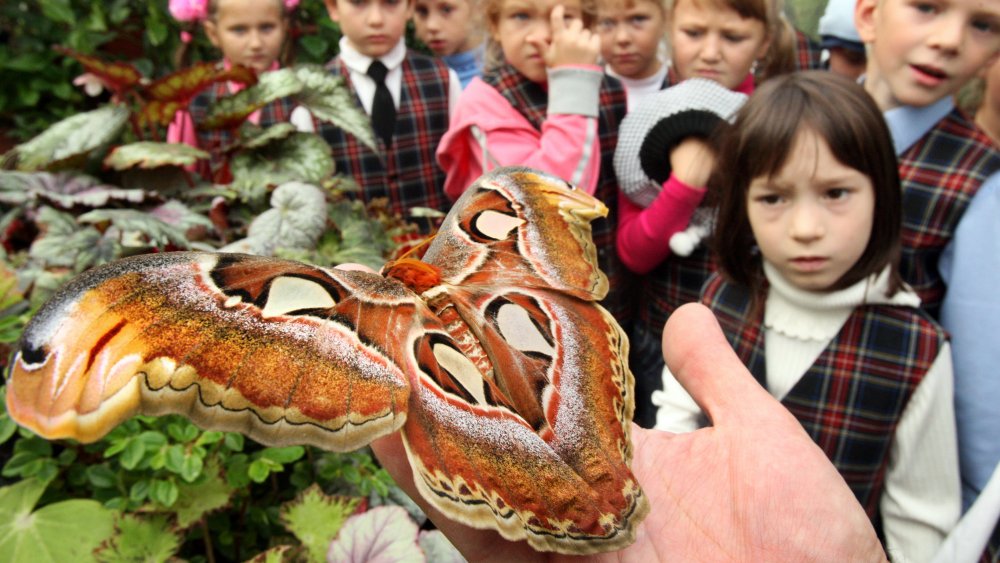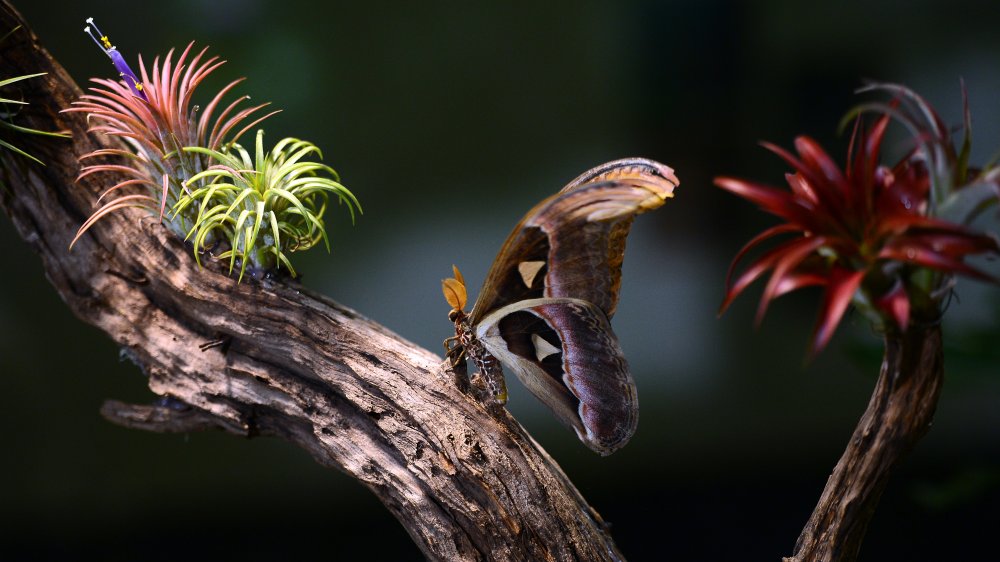The Tragic Life Of The World's Biggest Moth
The atlas moth is sort of the Andre the Giant of the moth community. It's a remarkable species with a wingspan that can reach nearly thirty centimeters, or large enough to make pretty much anyone shudder when imagining what it would feel like to have one crawl across their face. Their scientific name, Attacus atlas, is taken from two fictional behemoths: Atlas comes from the Greek titan who held the Earth on his shoulders, alluding to the creature's sheer mass, and Attacus, referring to the animal's unblinking willingness to straight up shoot a dog in front of its kids. Probably.
But for all of the "altogether ooky" mental imagery conjured up by the idea of a foot-long moth, the Atlas moth is harmless. Maybe beyond harmless. In its mature form, is poses roughly a zero percent threat to any living creature. In an Atlas-sized oversight on the part of evolution, these creatures emerge from their cocoons without a functioning mouth.
Moths and atlases
But you don't have to take our word for it. According to the Natural History Museum in London, the Atlas moth has a tiny, unusable proboscis, and is incapable of biting, nipping, or (and this is the big one) eating. That means that these behemoths of the insect kingdom develop into adulthood with all of the energy they'll ever possess. Despite the otherworldly figure they'd cut flapping across the sky, every move they make takes up precious calories gathered in their larval form, and a single flight can take days off their lifespans.
All told, an Atlas moth only has a week or two to live post-cocoon before it dies of starvation. The females, which are generally larger, will spend most of their days remaining as still as possible, conserving energy and hoping that a mate will spot them so they can lay eggs before they croak. They're born, they starve, they mate, they die. Basically, they're the first animal ever to exist just so Werner Herzog can narrate their nature documentary.

